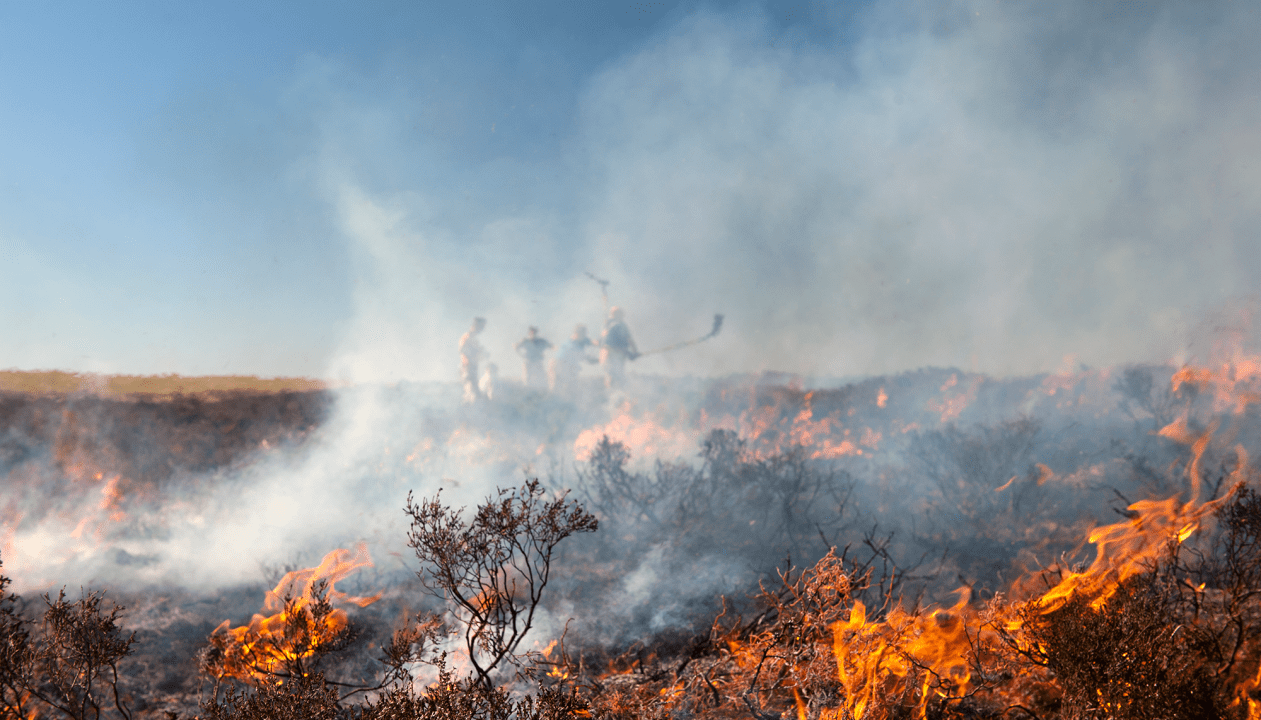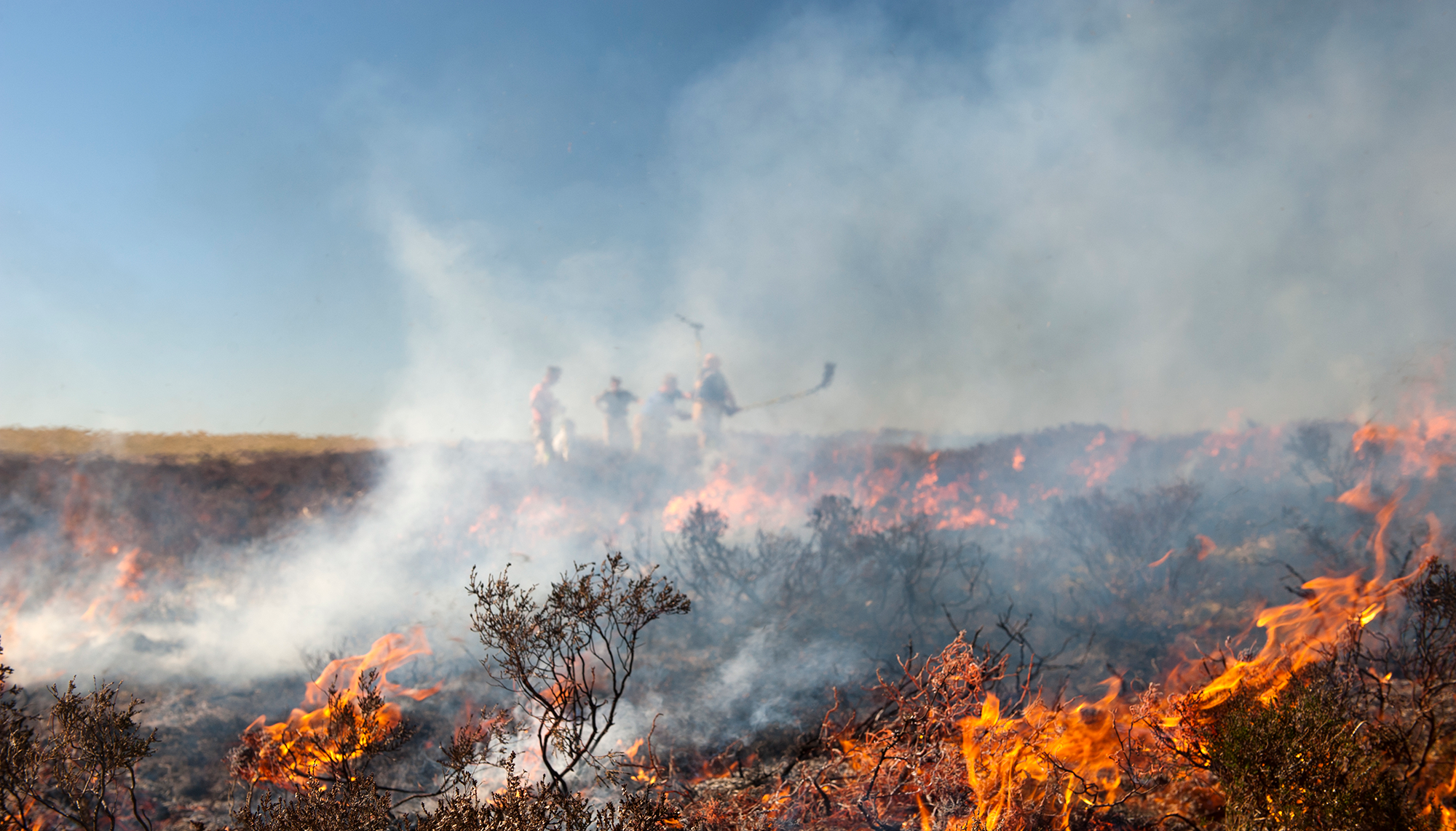
This year has been a bad one for wildfires in Britain. In June, nearly 30,000 acres burned near Carrbridge in the Highlands. In August, a careless camper, I’m told, ignited 5,000 acres in the North York moors, setting off 18 unexploded shells, shrapnel from one of which narrowly missed a gamekeeper. The pollution from wildfires was ten times worse this year than in the wetter weather of last year.
Yet Keir Starmer’s government has chosen this autumn to ban the one practice that has been preventing more such dangerous fires: the managed burning of heather on much of England’s moorland. In doing so, it has ridden roughshod over advice from scientists, firefighters, land managers, farmers and environmentalists, ignoring or misrepresenting evidence along the way.
Most of the wildfires this year happened on heather moorland. That is no surprise: heather is one of the few vegetation types in this country that readily catches fire. Especially in spring before greener, less flammable shoots appear, rank heather is liable to burn in dry weather. It has done so since time immemorial and just as with Californian and Mediterranean vegetation, the fires are more damaging and less easily controlled where the fuel load has built up because fires have been suppressed.
Hence for centuries shepherds and gamekeepers have deliberately burned patches of heather during winter, both to reduce the fuel load and to improve grazing for sheep and red grouse. This creates a mosaic of short and long heather, ideal for a range of rare birds, such as golden plover and merlin, as well as diverse insects and sphagnum mosses.
These winter ‘cool burns’ barely touch the mosses growing under the heather, let alone the peat, as demonstrated by a gamekeeper’s famous video: he places a Mars bar (other brands are available) in the moss, lights a fierce fire that burns over the spot, then retrieves the chocolate, its paper wrapper intact, unwraps it and eats it. By contrast, summer wildfires can burn down into the peat, doing more damage and releasing huge quantities of carbon dioxide.
In recent years, while grouse moors have continued this practice, other owners of moorland – mainly environmental organisations, local authorities and government bodies – have ceased burning heather. This is partly neglect, but also because they are in thrall to the new religion of rewilding. It is no surprise that many uncontrolled wildfires have been on such ownerships.
‘When a falsehood survives, it shows that Defra’s internal checks on scientific accuracy are not working’
In 2021, in an attempt to appease environmental activists, Boris Johnson’s government banned heather-burning on almost half a million acres of 40cm-deep peat. Gamekeepers switched to cutting heather instead, but in steep or rocky spots this is impossible. Now the Department for Food and Rural Affairs has gone further and banned all burning on 30cm-deep peat, while proposing to refuse subsidies for any land management with burning on 10cm of peat.
Shockingly, a government minister, Mary Creagh, has written to fellow MPs to justify this new policy with a claim that is simply not true: ‘The scientific consensus is that repeated burning risks permanently altering the species composition of healthy peatland habitats.’ Defra’s own work in 2019 only claimed that vegetation change is temporary; an independent scientific study published in 2023 by York University’s Andreas Heinemeyer found that while burning causes short-term impacts, it can also help the vegetation diversify; and this year, advice from Natural England, the government’s adviser, stopped short of claiming that regular burning had permanent effects. So this ‘consensus’ only exists in one Whitehall corridor.

The Moorland Association (of which I am a past president) drew Defra’s attention months ago to the error of claiming regular fire causes permanent damage. Andrew Gilruth of the MA says: ‘That a minister is still repeating this discredited line months later points to a deeper problem: evidence
assurance has failed, internal peer review has failed; ministers are being briefed with inaccurate information. When a falsehood survives through multiple drafts, publications and ministerial letters, it shows that Defra’s internal checks on scientific accuracy are not working.’
How about consulting yourself, Defra? This is what your department had to say in 2007: ‘If burning were to cease on traditionally burned heather moorland, [the young heather] would be replaced by swaths of old, woody heather… [with] a much-increased risk that if a wildfire were to start, it could be very destructive over a large area.’
This year, as in most years, much of the work of fighting wildfires was done by gamekeepers and farmers, who are equipped with tractors, mulchers and bowsers to help. They cut, wetted, back-burned and stamped out fires, often until well into the night. If burning is banned, this voluntary effort and equipment will be lost.
What’s really going on here is no mystery. Many people in the Labour party, the civil service, quangos and the Royal Society for the Protection of Birds ideologically detest the fact that most moorland is owned by the private sector and managed for grouse shooting. That this results in spectacular conservation successes, such as dense populations of breeding curlews, while allowing free public access, just annoys them even more. The official in charge of the issue at Natural England, for example, dismissed winter burning as ‘so-called moorland management’.
Rewilders argue that there are other ways to prevent wildfires, such as ‘rewetting’ moors through the blocking of ditches that were dug (with government subsidies) in the 1970s. But this has mostly been done already and in many places it is – of course – useless in a very dry year, when it would be most needed. Sometimes you catch rewilding enthusiasts musing that maybe it is better to get rid of heather because then grouse shooting and wildfires would both die out. But heather moorland is a speciality of the British Isles, found almost nowhere else, and the red grouse is unique to these islands, found absolutely nowhere else.
At the heart of this dispute is an over-centralised, monopoly approach to policy. Why decide about heather-burning in a Whitehall office, rather than allow experiments at a local level to capture traditional knowledge?









Comments